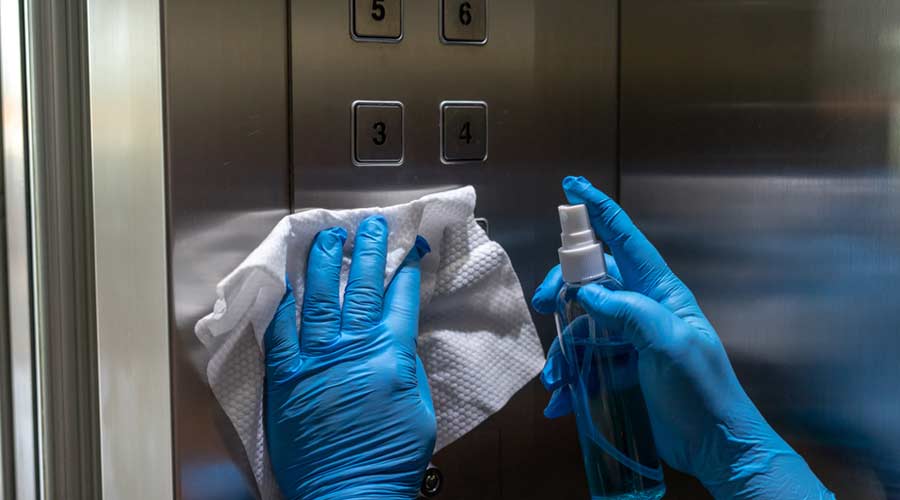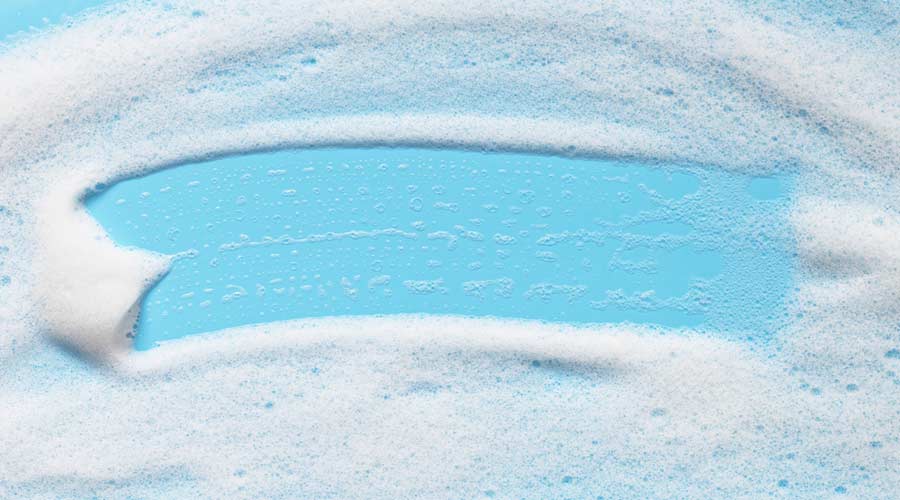
By Keith Schneringer, Senior Director of Marketing Jan/San + Sustainability for BradyPLUS
Hand hygiene, I believe we can all agree, is very important — and according to the Centers for Disease Control and Prevention (CDC), washing our hands properly is one of the best things we can do to prevent the spread of many illnesses.
In addition to protecting public health, strategies to promote good hand hygiene can also contribute to an overall green cleaning program at a building or campus — and we as jan/san distributors are here to assist with recommendations to help those facilities achieve both their building occupant health and sustainability goals.
With the increasing focus on creating and maintaining building spaces which contribute to overall building occupant wellness and enhanced guest experience, having a strategy to promote and steer hand hygiene compliance will continue to become more and more important.
Importance of Occupant Wellness
Absenteeism costs businesses billions of dollars per year in lost productivity — and absenteeism can also dramatically impact students’ performance in school.
With untold millions of lost days for both students and educators, absenteeism contributes to lower academic performance as well as decreased school funding, hand hygiene can play a positive role in mitigating these impacts.
A study published by the American Institute of Infection Control found that over a three-month period, the combination of hand hygiene education and alcohol — based hand sanitizer in a classroom can lower absenteeism by over 50 percent and be cost-effective.
A study published by the Journal of Occupational and Environmental Medicine found that over a 13.5-month period, the combination of hand hygiene education and alcohol-based hand sanitizer placed in strategic workplace locations and personal use resulted in “hygiene-preventable health care claims (being) significantly reduced in the intervention group by over 20 percent.”
What do each of these studies have in common?
Importance of Education: Each study references the need to educate building occupants and students regarding the benefits of effective hand hygiene. In each scenario there was a concentrated effort to engage and enroll participation through visual reminders like signs, posters, and stickers to reinforce key moments for hand hygiene.
In addition to promoting hand hygiene, it is also important to remind building occupants and students how to properly wash their hands. Knowing how, where, and when to wash hands is an important component to this education and training.
Ongoing education is also important — thinking about how to continue to reinforce the message of hand hygiene is critical to achieving positive results, and will help to build a culture of hand hygiene.
Importance of Access: Each study also references the need to have the necessary supplies — hand soap, water, and paper towels to wash and dry hands, and hand sanitizer to sanitize them.
Placing these supplies in adequate quantities will help to avoid shortages and help to build confidence that supplies will consistently be available for use by building occupants and students.
Importance of Sustainability
Sustainability has emerged as a global theme in the 21st century, and many building owners are pursuing LEED certification from the US Green Building Council in order to demonstrate and validate their commitment to providing building spaces which are better for the triple bottom line of building occupant health, reduced environment impacts and economic development.
According to the LEED Green Building Rating System, a LEED for Operations + Maintenance project is required to “develop strategies for promoting and improving hand hygiene, including both hand washing and the use of alcohol-based waterless hand sanitizers.” as part of an overall prerequisite to ”have in place a green cleaning policy for the building and site addressing the green cleaning credits, goals and strategies…” and that “at a minimum, the policy must cover green cleaning procedures, materials, and services that are within the building and site management’s control, and include the organization responsible for cleaning the building and building site.”
The purpose for this hand hygiene requirement is to help protect building occupant health and wellness by promoting hand hygiene strategies in order to increase the frequency and effectiveness of hand washing with soap and water. In addition, it is also important to supplement this hand washing promotion by providing alcohol-based waterless sanitizers for when occupants do not have immediate access to soap and water.
When purchasing hand soaps to contribute to your hand hygiene program, the LEED rating system requires that soaps either be Green Seal, UL ECOLOGO, or EPA Safer Choice certified, or that they contain no antimicrobial agents.
Washing your hands is the first step to hand hygiene — the next step is to dry your hands with a paper towel, and the LEED rating system requires that hand towels either be Green Seal or UL ECOLOGO certified, meet the EPA Comprehensive Procurement Guidelines for post—consumer recycled content, be FSC certified for fiber procurement, or be derived from rapidly renewable resources or tree—free fibers.
Even if your building is not interested in pursuing LEED certification, this standard can still be used as a blueprint for best practices — and as a matter of fact, the standard itself is a representation of best practices as voted on by the USGBC membership community which is comprised of individuals from the business (including building owners, facility management and the cleaning industry), education, healthcare, hospitality and government sectors.
In addition, there are other standards that can be applied to buildings and schools such as WELL, Fitwel, and Healthy Green Schools & Colleges Standard to name just a few — all of which recognize and promote the importance of hand hygiene.
Importance of Quality Hand Soap
Our society has been erroneously led to believe that antimicrobial or antibacterial hand soaps are the best options, but that is not necessarily the case. Unless you work in a healthcare of food service setting where antibacterial hand soap is required, a regular good old—fashioned hand soap is really all you need.
Think about it — it doesn’t matter if the bacteria on your hands is alive or dead, as long as it is washed off your hands and down into the sink.
As a matter of fact, the U.S. Food and Drug Administration (FDA) has banned the use of 19 active ingredients commonly found in antibacterial hand soaps.
The reasons?
Because there wasn’t enough empirical evidence to prove that the antibacterial hand soap actually performed better than regular hand soap, and there was concern that these ingredients may actually pose a long—term health risk.
In addition, the drying effect of these antibacterial soaps actually led to a decreased amount of hand washing in most cases, which is the exact opposite of what is needed to help promote improved health.
Really all you need for an effective hand hygiene program which can contribute to overall occupant health and sustainability goals is a good, regular hand soap for your facility — and if you want to be extra sure that the ingredients and packaging for that hand soap have been reviewed and vetted by a reputable third party source, UL ECOLOGO , Green Seal and EPA Safer Choice all have standards which can be used to identify certified options.
And while you are at it, you may want to consider a more sanitary hand soap dispensing system which is sealed — especially since a study from American Society for Microbiology has shown that bulk soap dispensers often contain more germs in the soap reservoir than you are trying to actually remove from your hands.
Yuck!
Importance of Being a Consultant
A hand hygiene program is an integral component in helping to promote occupant wellness, decrease absenteeism, and an excellent vehicle to help achieve overall organizational sustainability goals.
As a distributor, we are in an excellent position to act as consultants to help the buildings and educational campuses we serve to learn more about the benefits of hand hygiene and how to most effectively promote and steer compliance for their building occupants and students.
Keith Schneringer has been in the sanitary supply industry since 1990 and is currently the Senior Director of Marketing Jan/San + Sustainability for BradyPLUS, a specialized distributor and solution provider in facility care, foodservice, and industrial packaging. In his current role, Keith is responsible for marketing to the jan/san and facility care industry, for developing vertical-market-specific programs to better assist customers, and for leading the company's sustainability initiatives. Before assuming his current responsibilities, he worked as an account consultant, sales manager, marketing manager, and director of channel marketing + sustainability for WAXIE Sanitary Supply.
posted on 3/28/2025

 The Down and Dirty on Cleaning in Virus Season
The Down and Dirty on Cleaning in Virus Season How Surfactant Use is Expanding in Commercial Cleaning
How Surfactant Use is Expanding in Commercial Cleaning Maximize Your Margins: Learn How to Automate Pricing and Track Rebates
Maximize Your Margins: Learn How to Automate Pricing and Track Rebates